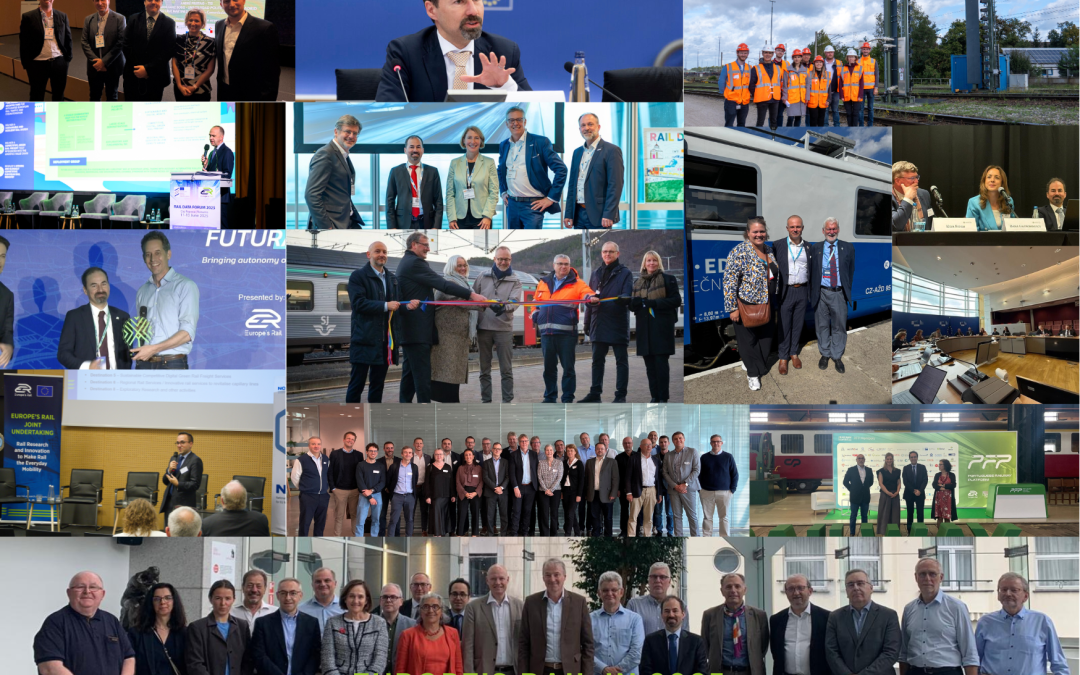2025 saw Europe’s Rail (EU-Rail) make significant progress across multiple initiatives, fostering partnerships and...


On 21 June 2024, the Governing Board of Europe’s Rail Joint Undertaking (EU-Rail) adopted a Call for Expression of Interest (CEI) with a view to selecting associated members with the potential to contribute to the achievement of its objectives. The Governing Board decision can be accessed here.
Discover detailed information about procurment rules and information.
Access detailed information about past tenders.

Europe's Rail regularly published Calls for Tenders. To find out about open Calls, follow link below.

Article 15 (Principle of transparency) of the EU-Rail financial rules states that the JU shall make available on its internet site no later than 30 June of the following financial year information on the recipients of funds deriving from its budget.
EU-Rail’s Innovation Pillar (IP) is tasked to deliver operational and technological solutions that contribute to a more efficient, flexible, and demand-led, yet safe and environmentally sustainable European railway system.
The System Pillar provides governance, resource, and outputs to support a coherent and coordinated approach to the evolution of the rail system and the development of the system view.
The Deployment Group advises the EU-Rail Governing Board on the market uptake of rail innovation developments and support their deployment.
For a successful and effective implementation of the Digital Automatic Coupler for European rail freight (DAC), it is of crucial importance to have open, close and efficient cooperation between rail stakeholders. The European DAC Delivery Programme enabled by Europe’s Rail, offers a unique European platform for such cooperation and collaboration.
Discover how Europe’s Rail Joint Undertaking is calling for a bold, coordinated investment strategy to simplify and modernise rail systems across the EU. This public-private partnership model – outlined in our High-Level Paper – proposes an €18 billion investment from 2028 to 2034 to strengthen European competitiveness, deliver greener transport, and drive technological sovereignty.

Discover detailed information on Europe's rail innovation initiatives, showcasing flagship and other projects aimed at enhancing rail systems across Europe. It highlights collaborative efforts funded by the European Union to develop sustainable, efficient, and competitive rail transport solutions.

Europe’s Rail Catalogue of Solutions illustrates successful R&I results in the form of possible products and solutions, while highlighting the benefits for final users, operators, infrastructure managers and/or suppliers. This publication also outlines the advantages of integrating demonstrators into market solutions so that they can deliver the rail innovation Capabilities of the future.
Jul 4, 2025
The aim of this report is to give insight into the topics and tasks of work package 20. The content and time schedule of the two tasks is defined and information about the distribution of work between the partners as well as the methods which will be used are given.
The WP is divided into two tasks, whose motivation and aims are explained. First results and the relevant methodologies are clarified.
Within the task 20.1, the work intends to expand the current state of the art and work towards new regulation requirements that could enable virtual certification in the foreseeable future. The aerodynamic topics, on which the studies will be based on, were defined and a generic train model was designed, which allows the study of the different methods and the validation of numerical results with experimental tests. However, no full-scale data of the generic train will be available. A comparison between numerical results gained with the developed method and full-scale data of a regional train will be delivered by a partner of the WP for validation purposes in the later progress of the WP.
The task 20.2 is dedicated to the optimisation of the train’s roof equipment with regards to noise and mainly drag and therefore fuel consumption and CO2-emission. The same generic train geometry will be utilised for the study of optimal train roof equipment placement. A generic pantograph was generated to give insight into the flow around different parts of the pantograph as well as the forces on the pantograph. The power transfer efficiency is to be optimised by adapting the pantograph aerodynamics.
All tasks are according to the plan, no delays have to be reported.